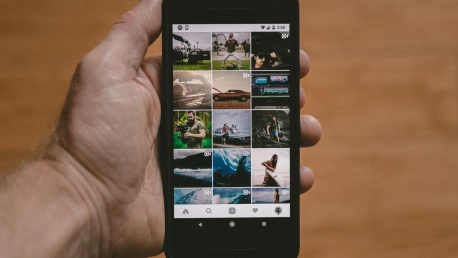If you haven’t lived in a cave in the last couple of years, you may have heard of something called virtual influencers. Although many experts rushed to dismiss this new trend, they couldn’t keep it from making a splash in digital media marketing. These personas have become models, brand ambassadors, and tastemakers across social media platforms. Despite their digitized appearance, millions of people around the world follow and engage with a new wave of online personalities: virtual influencers. Before picking up the phone and calling your marketing team to “order” one, it’s important to understand what they are and how they work.
What are Virtual Influencers?
Virtual influencers are fictional, computer-generated personas sporting the realistic characteristics, features, and personalities of human beings. While the actual date when the first virtual influencer appeared is still up for debate, many of them can be traced to Brud, an AI Start-Up company based in Los Angeles. In 2018, Brud created Lil Miquela, widely considered to be the first of its kind. The queen of the virtual influencers is an ultra-cool, self-proclaimed “Musician, change-seeker, and robot”. As expected, she promotes products and services, the standard outline for influencer marketing.
Are virtual influencers real influencers? Yes, but there are some key differences. Social media gurus always talk about authenticity and transparency. Virtual influencers have a harder time proving their authenticity – because they are programmed, the owner has total control over their actions. Even if their creators reveal their methods and styling, virtual influencers remain fictional personas.
Although they may not be as relatable as real human influencers, their popularity is rising day by day. For example, Lil Miquela is arguably the most popular, with 2.7 million followers on Instagram and 238.000 subscribers on YouTube.
How Do Virtual Influencers Work and How Companies Benefit from the New Trend?
Behind every virtual influencer is a hidden team of artists, programmers, and marketers. These creators choose the way the influencer looks and acts. They also decide who it hangs out with, dates, and collaborates on social media platforms. Digital influencers can look just as real as a human, but they can also be cartoonish or SIM-like characters. Most often, these digital personas are designed by artists and/or photographers. Creators edit their influencers onto whatever backdrops they want. For example, creating a travel influencer means placing the character over high-res scenery shots.
Partnering with digital influencers is already familiar to many brands. Calvin Klein, Prada, Dior, Samsung, Gucci, and Renault are the ones that come to mind, but there are many more out there that dipped their toes into this new trend. Companies that move into the realm of virtual influencers have some key advantages. For example, these reliable partners deliver messages with strong discipline, without going off script or getting in trouble in their personal lives. Because their personalities can be tailored to match the values of the brand they’re representing, some experts even argue that non-human online celebrities can make the perfect brand ambassadors.
Moreover, according to a report released in 2019 by the social analytics platform HypeAuditor, “virtual influencers have almost three times more engagement than real influencers. That means that followers are more engaged with virtual influencers content.”
5 Virtual Influencers Taking Over the Internet
Lil Miquela
Lil Miquela is a half-Spanish, half-Brazilian singer/model and markets herself to brands and advertisers while creating partnerships with companies to promote their products or services. She is not only an Instagram sensation but has also gone viral on music-sharing app Spotify, with her debut single “Not Mine”.
Shudu Gram
Shudu is widely considered to be the world’s first virtual supermodel. She became Rihanna’s muse for her cosmetic brand „Fenty Beauty” and is considered by its creator, artist, and photographer Cameron-James Wilson, to be a “work of art”. Shudu Gram has more than 200.000 followers on Instagram and has recently joined the Balmain family as one of their models.
Imma Gram
Imma’s resemblance to a real human is uncanny and leaves many confused. Since its creation in 2018, Imma Gram has become a global sensation, leading brands such as Puma, Valentino, and Dior Makeup to work with her. Imma is interested in Japanese culture and film, and stands out of the crowd with her pink hair color.
Blawko22
With his “bad boy” attitude, Blawko22 is a digital influencer a little out of the ordinary. His creators decided to always keep his face partially hidden. Blawko22 works alongside many luxury brands, such as Versace or Burberry, and has 153k followers on Instagram.
Noonoouri
Created by the German graphic designer Jorg Zuber, Noonoouri doesn’t even intend to look like a real human. This character is a 19 years old girl who promotes a vegan lifestyle and often shares her thoughts about sustainability. Noonoouri collaborates with the big luxury brands, including Dior, Saint Laurent, and Gucci.









